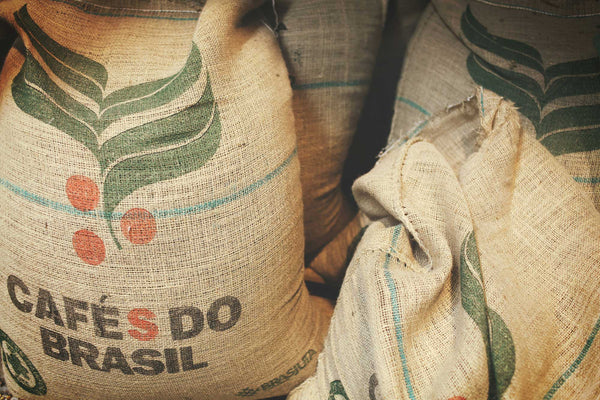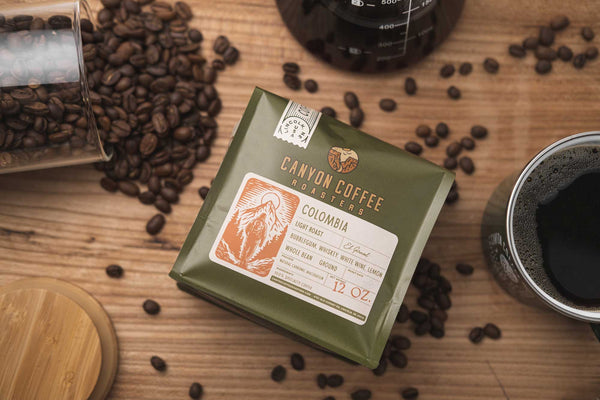
What is Flavor Profile? Unlock the Best Flavors in Specialty Coffee
Introduction
There are many specialty coffees in the world – an almost infinite amount. Without an understanding of the basics, this can quickly become overwhelming. When looking at a coffee label, what should I look for? What is the processing method and why does it matter? Is there a difference between these two Colombian coffees? Will they taste the same because they’re from Colombia? What is flavor profile? Does the coffee taste like that? Is it flavored coffee or just the regular brew I’m used to? We’re here to answer these questions to make specialty coffee easy – beginning with flavor.
I want to be clear: there are no prerequisites to enjoying a cup of specialty coffee. It can be as simple as brewing the coffee the way you like to brew it and enjoying the coffee drinking experience. The improvement in quality alone allows us to carve a moment of pleasure out of the daily grind, a moment of silence amongst the chaos. It enhances these moments through quality and flavor instead of distracting through poor tasting coffee. This article is to add depth to that experience for those that want it, clarifying the commonly misunderstood concept of flavor profile in specialty coffee.
The flavor profile of a specialty coffee is an intricate array of sensory notes that define the subtle coffee drinking experience. A flavor profile can encompass a wide spectrum of tastes, from sweet to bitter, floral to fruity, and so much more. Usually described as a short list of some of the most prominent flavors unique to the bean (toffee, lemon, molasses), it can also include a deeper sensory look at acidity, body, and aroma. It allows us to discuss, describe, and appreciate specialty coffee in a much deeper sense.
In this article, we will explore the concept of flavor profile, detailing its dimensions and illustrating how different factors, such as the origin of the beans and the brewing process, can profoundly influence it. Whether you are a seasoned coffee connoisseur or a novice embarking on your coffee journey, understanding the flavor profile is an essential step in appreciating the multi-layered world of specialty coffee.
Defining Flavor Profile
Flavor profile, as listed on a bag of specialty coffee, is usually a short list of some of the most prominent flavors found in that individual bean (toffee, lemon, molasses). These are subtle notes of flavor that can be found in each sip, flavors that are completely natural and inherent to the coffee. All coffees, from the oldest jar found in your grandmother’s pantry to the freshest beans straight from the roaster, have a flavor profile. But specialty coffee, through its infinite variety and elevated quality, pays particular attention to flavor because it can be much more prominent and unique. While usually depicted on the bag in this simple way, the flavor profile of a coffee encompasses the total sensory impression you get, including the coffee's aroma, acidity, body, and flavor.
Aroma
The aroma is the first indicator of a specialty coffee's character, even before you take your first sip. It can range from fruity to nutty, from floral to earthy.
Acidity
The acidity refers to the specialty coffee's sharpness or brightness. This should not be confused with the term as it's used in chemistry - here it refers to the tangy, effervescent quality that livens up the coffee.
Body
The body refers to the coffee's weight or consistency in your mouth, often described as light, medium, or full.
Flavor
The flavor is the specialty coffee's overall taste. It is the collective sensory experience that may include notes of fruits, nuts, chocolate, spices, or even florals.
Influence of Coffee's Origin and Terroir on its Flavor Profile
One of the fascinating things about specialty coffee is the influence of its origin and terroir on its flavor. Terroir, a term borrowed from the wine industry, refers to the specific environmental conditions where the coffee is grown - the soil, climate, altitude, and even local flora all contribute to the specialty coffee's flavor.
For instance, Ethiopian specialty coffees, particularly those from Yirgacheffe, are renowned for their wine-like acidity and vibrant fruit or floral notes, a characteristic shaped by its high-altitude, fertile soils. Colombian specialty coffees, on the other hand, often exhibit balanced acidity with a nutty, caramel sweetness, owing to the volcanic soils and temperate climates of its growing regions.
Role of Coffee Processing in its Flavor Profile
Once coffee cherries are harvested, how they're processed plays a significant role in shaping the final flavor profile. The processing method is how the bean is removed from the coffee cherry. There are three primary processing methods: natural, washed, and honey.
Natural processing involves drying the entire coffee cherry before removing the been and often imparts fruity, berry-like flavors to the coffee. Washed processing, on the other hand, involves removing the bean prior to drying and emphasizes the inherent flavors of the coffee bean itself, often leading to a cleaner, brighter profile. Honey processing, somewhere in between, leaves some of the fruit's mucilage during drying, which can lead to a pleasing balance of fruity sweetness and clarity of flavor.
While these three processing methods are most common, many other variations exist, each imparting its own influence on flavor profile. In recent decades, research and investment have greatly impacted how coffees are processed, leading to many experimental methods. These also greatly impact the final flavor of the coffee.
The Impact of Roasting on Flavor Profile
Roasting is where the dried, green specialty coffee beans are introduced to heat, augmenting their flavor and aroma as well as increasing their solubility. Specialized equipment is used to roast the coffee bean via convection and conduction heat. Once the specialty coffee is roasted, it is quickly cooled to lock in the sought after flavors.
A specialty coffee bean can be roasted many different ways – it is the roaster’s job to determine how to roast the coffee in a way that highlights its unique flavors. A roast profile is used to help a coffee roaster replicate the coffee roasting process. Coffee beans are generally roasted for a period of 8 to 20 minutes reaching 400 to 450 degrees Fahrenheit, depending on a multitude of variables such as equipment used and batch size. Different roast levels can significantly influence the coffee's flavor profile.
A light roast generally preserves more of the specialty coffee's original characteristics, bringing out the coffee's acidity and highlighting flavors imparted by its origin and processing. A medium roast often strikes a balance, reducing acidity slightly while introducing more caramelization notes like nuts and chocolates. A dark roast can mute many of the specialty coffee's original flavors but adds bolder, toasty flavors, often described as bittersweet or smoky.
How Brewing Methods Affect Flavor Profile
Finally, the way you brew your specialty coffee can also play a role in shaping the flavor profile. Each brewing method, from the French press to the pour-over to the espresso machine, extracts the flavors from the coffee beans differently.
A French press, for instance, allows the coffee to steep, resulting in a full-bodied, robust cup. A pour-over method can yield a clean, bright cup that lets the coffee's unique characteristics shine. An espresso concentrates the flavors into a rich, intense shot of coffee, often amplifying both the sweetness and bitterness of a coffee.
Conclusion
The world of coffee flavor profiles is as diverse and intricate as the landscapes where the coffee cherries are grown. From the high mountains of Ethiopia to the lush landscapes of Colombia, from the careful selection of processing methods to the precise art of roasting, and finally, the brewing method of choice - each stage shapes the flavor profile of your specialty coffee.
About the Author
Nathan Jones is the owner of Canyon Coffee Roasters in Lincoln, Nebraska. He has extensive experience (10+ years) in the coffee industry, both as a roasting professional and barista. Nate’s love of coffee, people, and community inspire him to share his knowledge with others with the aim of demystifying the rapidly expanding world of specialty coffee and create meaningful relationships along the way. Nate’s favorite way of drinking coffee is either as a latte or from his Moccamaster, shared with his wife Kate. Nate enjoys spending time with his friends and family when he’s not posted up at the roaster.

